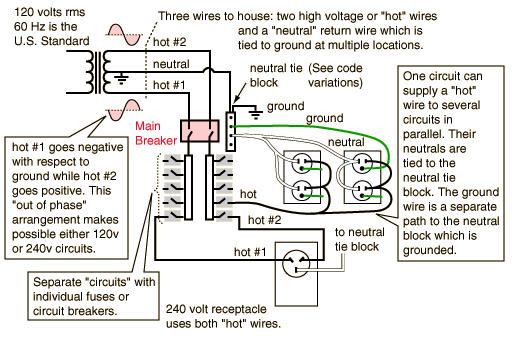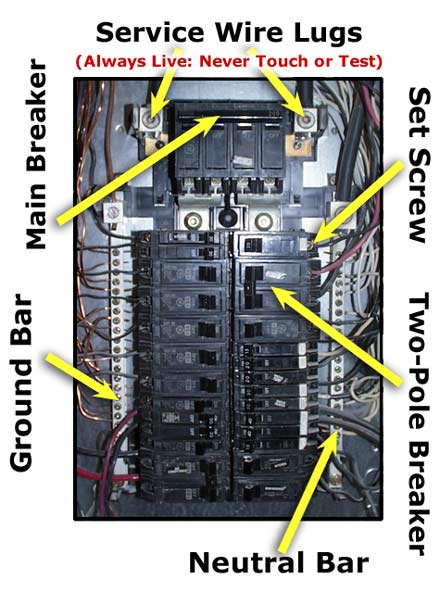OK the pull of the matress was too great, and I was half asleep.
Here it is again, better, I hope.
Most houses in the US do indeed get either,
1) one phase and neutral. The neutral (white) is approx earth, and phase (black) flaps around to give 117VRMS (or so.)
Only seen in small flats and what we would call bedsits
2) 2 phases and earth. The 2 phases are in anti-phase, so when one goes down the other goes up. There is 110 (117 at the tranny) from each to neutral (or ground) and 220-240 between the two phases. Large loads are often connected between the two phases. Single phase loads use black white wire, regardless of which phase they use as 'hot' , but when the 2 phases come together, the 'hot' wires are usually red and black.
Such a system is seen in what we would call normal size houses.
If many parts of the states, you ask for three phase you get case 2 above (white-black-red) plus a third 'hot' blue wire, which is at ~180V to neutral or earth, whose voltage is in 90 deg phase to the direction of the other 2. This blue wire is the "wild leg".
The phase-phase voltages are still forming a triangle, but they have given you two halves of one side, and the 'height' of the triangle, rather than 3 equal radii. This is a consequence of where the transformer is earthed.
In the UK the substation transformer is a star, earthed at the centre. In the wild leg system the transformer is a delta, earthed halfway accross the base.
This additional stuff is not relevent to the questioner originally, but thrown in to explain why 3 phase in the US is much less common, and likely to raise more quesions than it answers. (and why the man on the phone gets jittery)
This is not helped that many factories and industrial estates with their own substation do choose to wire in the european way, so the phase-phase voltage is then 208, and all 3 phases are equal to ground after all.
Hope thats better.
Mike
PS see '4 wire delta' diagram here, for what I'm on about in terms of vectors.
http://www.themeterguy.com/Theory/visualization.htm



